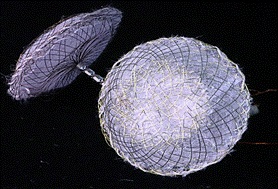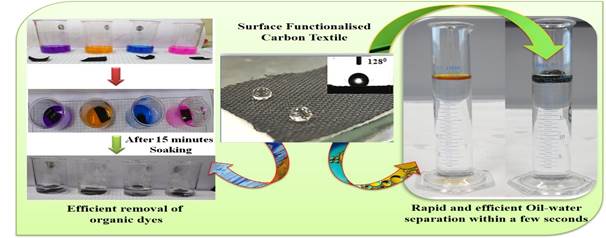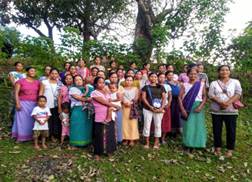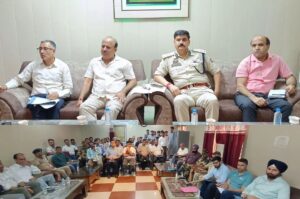Year-End- Review-2021- Ministry of Science and Technology | Current Affairs | Online Exam Tyari |
India’s ranking in global S&T indices continue to rise
India surges ahead with Supercomputing Mission
DST”s efforts make scientific infrastructure accessible across institutions
DST extends institutional support for women scientists
Saffron bowl brought to the Northeast
Inspire Manak reaches out to remote places and involves increasing number of students
DST supported research helps move towards affordable health and wellbeing for all
Grassroots Innovations: Vocal for Local
The year 2021 brought some unprecedented challenges for humankind. DST and its autonomous institutions geared themselves up to help India deal with the challenges. The department also implemented the lessons learnt last year through COVID-19 pandemic to reach out to the world with STI solutions that brought about positive transformations in every sphere, be it healthcare, sustainability, energy efficiency, Climate change, food production or even in terms of the way we work.
Major Success Stories of DST During 2021
- India’s ranking in global S&T indices continues to rise
India has risen to the 46th position featuring within the top 50 innovative economies globally as per Global Innovation Index (GII). The country remains among the top 3 countries in scientific publication as per NSF database and has also reached 3rd Position in terms of no of PhDs, in size of Higher Education System; as well as in terms of number of Startups.
- India surges ahead with Supercomputing Mission
Under the National Super-Computer Mission (NSM), 4 new Supercomputers have been installed since July 2021 at IIT-Hyderabad, NABI- Mohali, CDAC-Bengaluru, and IIT Kanpur under NSM aiming to set up a grid of supercomputing facilities to provide access to High-Performance Computing (HPC) facilities to around 75 institutions and more than thousands of active researchers, academicians working through Nation Knowledge Network (NKN).
- DST’s efforts make scientific infrastructure accessible across institutions
A new program called Synergistic Training Program Utilizing the Scientific and Technological Infrastructure (STUTI) announced recently is envisioned to boost human resource and its capacity building through open access to S & T Infrastructure across the country. Proposals invited under the Sophisticated Analytical and Technical Help Institutes (SATHI) programme will support 3 state-of-the-art national facility SATHI centres for high-end research. Proposals have been invited to support strengthening the R&D base of the performing Universities in the country under the Scheme “Promotion of University Research and Scientific Excellence” (PURSE).
- DST extends institutional support for women scientists
The Women Science Programme of DST has started a new initiative to support Women PG Colleges under the CURIE (Consolidation of University Research for Innovation and Excellence in Women Universities) Program and invited proposals for the same. Besides, 30 institutions have officially started GATI (Gender Advancement for Transforming Institutions) Pilot Program this year. The first of its kind program for lateral entry for women researchers in joint R&D projects between India and Germany was launched.
- Communities empowered through STI hubs, point of care diagnostic kits, and encouraging entrepreneurial initiatives
Techनींव@75 programme, a testimonial of empowerment of communities, was launched on Janjatiya Gaurav Diwas for yearlong celebrating the STI empowerment of the community for creating equitable, inclusive economic growth. A year-long programme called ‘Vigyan Utsav’ has also been launched to celebrate the STI Ecosystem on the occasion of Azadi Ka Amrit Mahotsav on a selected theme every month till August 2022. The Department had initiated the setting up of Community COVID Resilience Resource Centres (CCRRCs) for better recovery, building Science Technology and Innovation (STI) capacities and capabilities against various uncertainties at community level. Seven Scheduled Caste (SC)/Scheduled Tribe (ST) Cells and seven Science Technology and Innovation (STI) Hubs have been established for holistic development of SC/ST. Point-of-care, cost effective, easy-to-perform diagnostic toolkits developed to detect Salmonella, Staphylococcus aureus, Clostridium perfringens, Campylobacter jejuni and Campylobacter coli contamination of food. A pen drive size android app enabled user friendly DNA sensor was developed for onsite detection of scrub typhus. A bouquet of coloured artificial diets for rearing silkworm was developed to produce naturally coloured cocoon.
- Saffron bowl brought to the Northeast
The saffron bowl of India, so far confined to parts of Kashmir, has now spread its wings to parts of the North East through the focused efforts of the North East Centre for Technology Application & Reach (NECTAR). The Northeast saw the successful cultivation of saffron for the first time in Yangang village of South Sikkim. It is now being expanded to Twang, Arunachal Pradesh and Barapani, Meghalaya.
- SERB-DST partners with Intel India to launch first-of-its-kind initiative to advance deep tech-based research in India
The Indian research community will soon be able to pursue industry-relevant research opportunities in the areas of deep technologies that are novel, transformative, and can have a ground-breaking impact on a national scale through ‘Fund for Industrial Research Engagement (FIRE)’ launched by the Science and Engineering Research Board (SERB) in collaboration with Intel India.
- National hackathon organised by IIT Madras & Sony India encourages citizens to come up with solutions using IoT Sensor Board
Citizens across the country participated in solving India-specific problems of societal interest using IoT Sensor Board through a National hackathon called ‘SAMVEDAN 2021 – Sensing Solutions for Bharat’. The Grand Challenge Competition open to all Indian nationals residing in India was organised jointly by IIT Madras Pravartak Technologies Foundation (IITM-PTF), along with Sony India Software Centre .
- A New State of the Art Building, Office Block-I, constructed at Technology Bhawan campus inaugurated
A new State of the Art Building, constructed at Technology Bhawan campus for the Department of Science & Technology (DST) and Department of Scientific & Industrial Research (DSIR) has been inaugurated. The new office blocks have been constructed to accommodate DST, DSIR and some Autonomous Institutes under DST located at Delhi.
- INSPIRE Manak reaches out to remote places and involves increasing number of students
INSPIRE MANAK awards were conferred to the top 60 innovators selected from a total of 3,92,486 students who submitted their innovations from schools across the country which were screened at different levels.
- Marching towards Atmanirbhar Bharat with several indigenous smart, low cost technologies under DST supported make in India
A new automated technology for collection of toilet waste which is easy to maintain and 7 times cheaper alternative to the bio-toilets, can be used to maintain the toilet system of the Indian Railways. A smart system that can protect power grids from short-circuits has been developed that can be incorporated in any of the large power sector companies who are working with their standard superconducting fault current limiters. Low-cost semiconductor manufacturing process has been developed and used to design integrated circuits (ICs) to handle voltages up to 20 V. An advanced wound dressing developed based on agarose, a natural polymer derived from seaweed agar will allow cost-effective dressings for chronic wound patients. A sticky mat which takes away dust from a contacting surface, can ensure a clean, hygienic, healthy, and refreshing atmosphere at our home, offices, hospitals, and laboratories as also smooth functioning of many expensive equipments. A multifunctional heat sink enabled by 3D printing which can dissipate heat from mechanical devices at 50 percent enhanced rate compared to conventional sinks was developed to withstand load while dissipating heat by team at IIT Bombay. TDB has invited proposals “Commercialization of technologies by the startups for SELF-RELIANT INDIA” to support strengthening local manufacturing, building local supply chains, and converting local indigenous products into global brands.
- Leapfrogging towards sustainability with carbon footprint reducing technologies: EV, alternative & clean energies
As a part of Mission Innovation 2.0, India is co-leading the Innovation Community on low carbon affordable heating and cooling of buildings along with European Commission and the UK. It has overwhelming response from Canada, Australia, Finland, Morocco, Netherlands, Sweden, and Saudi Arabia with IEA and RMI participating as stakeholders.
Department of Science and Technology, Government of India and European Union under EU-India Clean Energy and Climate Partnership invited the proposals for collaborative research projects aiming at smartly integrating a large amount of renewable energy in local energy systems with an amount to the tune of €9 million committed by European Countries under Horizon 2020 programme with matching grant from DST.
DST had participated in the ACT#3 Call in collaboration with other ACT partnering countries in the area of CCUS for adapting the global practices and to promote translational research for transfer of technologies from low to higher TRL levels. Two multilateral CCUS consortia have been supported to IIT Kharagpur, IIT Bombay, GIIP New Delhi in partnership with Netherlands, Norway, Denmark, Germany, UK, USA etc.
Innovative and low-cost process developed for the synthesis of in-situ carbon modified LiFePO4 (LFP), a cathode material for Lithium-ion batteries by ARCI. Indigenously developed large-scale reactor produces substantial amount of hydrogen using sustainable sources like sunlight and water. Researchers have developed a non-expensive way to coat carbon on lithium metal oxide electrodes for lithium-ion batteries (used in electric vehicles) which will double its life due to protective carbon coating. Technologies have been developed for correcting pressure and flow inconsistencies of industrial processes saving power wasted in in the form of steam, as well as convert high ash Indian coal to methanol. Scientists at JNCASR have found a new lead (Pb) free material which can efficiently convert waste heat to power our small home equipment and automobiles.
- DST supported research helps move towards affordable health and wellbeing for all
Researchers have developed a compound called “6BIO” that can provide a better method to treat Autism Spectrum Disorder (ASD). A molecule that disrupts the mechanism through which neurons become dysfunctional in Alzheimer’s disease (AD) has been developed by JNCASR scientists which could be a potential drug candidate. A new technique to measure DNA modifications can help early diagnosis of multiple diseases. Better drug delivery mechanisms have been developed as well as flexible low cost, wearable sensor that can track sweat for monitoring the health and physiological status of the human body. The first National Heart Failure Biobank (NHFB) in the country that would collect blood, biopsies, and clinical data as a guide to future therapies was inaugurated at the Sree Chitra Tirunal Institute for Medical Sciences and Technology (SCTIMST).
- Grassroots Innovations: Vocal for Local
DST along with National Innovation Foundation (NIF) has supported several grassroot innovations like traditional method of making Etikoppaka toys, Laxmi Asu Making Machine which has revolutionized the weaving of the Pochampally silk and reduced the drudgery of thousands of weavers involved in the occupation as well as polyherbal and cost-effective medicine to treat Mastitis, an infectious disease of dairy cattle.
- DST supported research assesses state level vulnerability, health & other effects of climate change
The National climate vulnerability assessment report supported by DST has identified 6 eastern states–Jharkhand, Mizoram, Orissa, Chhattisgarh, Assam, Bihar, Arunachal Pradesh, and West Bengal as states highly vulnerable to climate change. Researchers have found that climate parameters accounted for 9-18% of the total infectious disease cases in children. Another research has found that Mineral dust, biomass burning, secondary sulfate, secondary nitrate from northwest India and Pakistan, polluted cities like Delhi, the Thar Desert, and the Arabian Sea area, and long-range transported marine mixed aerosols are the main sources of aerosols in the central Himalayan region. North-Western, Central, and further to south-central region of India were found to be the new hotspot of intense heatwave events over the past half-century highlighting need for developing effective heat action plans in the three heatwave hotspot regions with a focus on different vulnerabilities among the inhabitants. Researchers have also calculated the economic impact of aerosols, dust, and clouds reducing solar energy generation from photovoltaic and rooftop solar installations, found severe cyclonic storms in the North Indian Ocean region increasing in the past four decades, and that thermocol could be the material of the future for construction of earthquake-resistant buildings.
- DST support looks towards better disaster management
Wadia Institute of Himalayan Geology (WIHG) researchers have found the first geological evidence of an earthquake at Himebasti Village on the border of Assam and Arunachal Pradesh, documented by historians as Sadiya earthquake in history, which is recorded to have caused massive destruction in the region and almost destroyed the town in 1697 CE. This finding could contribute to a seismic hazard map of the eastern Himalaya, which can facilitate construction and planning in the region. On the other hand Mishmi ranges (MR) in the North-Eastern tip of India, which has witnessed the imprints of the largest earthquake ever recorded in the Himalaya in the Kamlang Nagar town of Arunachal Pradesh, India has a widely distributed earthquake pattern, unlike the western and central Himalaya where the pattern is concentrated south of the Indus Suture Zone (ISZ), in the margin between the Eurasian and Indian Plates) over a nearly 30-km-wide at 10 – 20 Km depth.
- DST support helps access to clean and potable water for all
Water Quality in the lower stretches of the River Ganga was found to be alarming while Indore Municipal Corporation rejuvenates 330 traditional water supply sources (wells & bawdies). An improved wastewater treatment solution developed that can completely reuse industrial dye wastewater from textile industry, eliminating its toxicity and making it suitable for domestic and industrial usage. A much-improved Advanced Oxidation Process (AOP) technology targeting zero discharge water management system is being utilized for the complete reuse of industrial dye wastewater for domestic and industrial usage at a rate of 10 Kilo litres /day. A new technology using UV-Photocatalysis can treat municipal sewage and highly polluting industrial wastewater streams. A national Call for Proposals under Water Technology Initiative (WTI) for RD & D activities in the area of Desalination, efficient desalination systems and Test Beds & Pilot-scale demonstrations for emerging & futuristic technologies has received more than 300 proposals against the call on sustainable desalination technologies covering the Applied Research, Technology Assessment, Convergent Solution and Centre of Excellence (CoE) streams. Indo Dutch Water Roundtable was organised by DST for paving the future roadmap for Water Cooperation between India and Netherlands.
- DST supports agricultural technologies ranging from grassroots to lab based for doubling farmer’s income
Grassroots technologies like a variety of mango called Sadabahar, which is resistant to most major diseases and common mango disorders, practice to develop support roots in cashew trees to protect from borer attacks and cyclonic storms, self-pollinating apple variety that does not require long chilling hours were supported. A composite paper made of carbon (graphene oxide) loaded with preservatives has been developed by scientists which can be used as wrappers to help extend shelf life of fruits.
- Waste Management technologies with DST’s support helps the march towards waste to wealth
A novel high-performance bioreactor system integrated with sustainable pre-treatment process enables anaerobic digestion of complex fat-rich sludge from dairy industry. Researchers have developed a technology to produce energy-efficient walling materials using construction and demolition (C&D) waste and alkali-activated binders. A new high rate biomethanation technology for the integrated treatment of sewage and organic solid waste and concomitant generation of biogas and bio manure can treat groundwater and wastewater and convert it to potable water. A low-cost, integrated composting technology, which includes microbe-aided vermistabilisation can convert toxic sludge from the textile industry into plant probiotics in a short time.
- DST support has helped develop a slew of new age technologies
A highly stable and non-toxic security ink from nano-materials that spontaneously emits light (luminescent) due to its unique chemical properties can combat the counterfeiting of branded goods, bank-notes, medicine, certificates, currency. Scientists at INST have produced electron gas with ultra-high mobility, which can speed up transfer of quantum information and signal from one part of a device to another and increase data storage and memory. A classification method based on Deep Learning (DL) network can evaluate hormone status for prognosis of breast cancer. Researchers at RRI have discovered a new exotic, strange state of materials in contact with an environment that alters its physical properties in the presence of an electromagnetic field, leading to better quantum technologies, which are tunable and controllable as per the user requirements.
- DST’s autonomous institutions contribute to multifarious research ranging from Health, Medical devices, Energy to unraveling the mysteries of the Universe
- Sree Chitra Tirunal Institute for Medical Sciences and Technology, Trivandrum (SCTIMST) has developed two biomedical implant devices called Atrial Septal Defect Occluder and Intracranial Flow Diverter Stents in collaboration with National Aerospace Laboratories, Bangalore (CSIR-NAL) using superelastic NiTiNOL alloys. SCTIMST also entered into Technology Transfer Agreements with Biorad Medisys for these two Biomedical Implant Devices.

(Chitra ASD Occluder)
- Jawaharlal Nehru Centre for Advanced Scientific Research (JNCASR) developed material to tap waste heat generated by appliances and reuse it. A new material, Silver Antimony Telluride, can facilitate energy conversion.

A representative image demonstrating thermo-electric effect.
- Scientists from Jawaharlal Nehru Centre for Advanced Scientific Research (JNCASR), Bengaluru and the Indian Institute of Science (IIS), Bengaluru, tuned the nature of the chiral activity of millimetre-sized rice-shaped grains with the help of 3D printing. By exploiting 3D printing to design chiral active matter, scientists can systematically encode different extents of chiral activity and explore its consequences on the emergent dynamical behavior which can be useful in medicinal drug designing, and separation where self-recognition, sorting, and discrimination of molecules are required.
- Agharkar Research Institute (ARI), Pune, Birbal Sahni Institute of Palaeosciences (BSIP), Lucknow, Institute of Advanced Study in Science & Technology (IASST), Guwahati and Sree Chitra Tirunal Institute for Medical Sciences and Technology (SCTIMST), Thiruvananthapuram were approved for testing COVID-19 samples and testing sample to detect SARS-CoV-2.
- The Science and Engineering Research Board (SERB) approved setting up of, up-to 3 Centres of Excellence (CoEs) in the area of Earth and Atmospheric Sciences, for developing Artificial Intelligence & Machine Learning (AI & ML) approaches to geohazard, weather & climate prediction. These CoEs will developed as network centres in linkages with Ministry of Earth Sciences. SERB solicits R&D proposals to establish these CoEs in the country, in better weather and ocean forecasting and long-term environmental sustainability, deep learning models for early warning of extreme geohazards and predict climate extremities and climate change mitigation, through high-precision analytics.
- International Advanced Research Centre for Powder Metallurgy and New Materials (ARCI) developed Super-hydrophobic functionalized carbon textiles as multifunctional advanced materials for effective and economic separation/removal of contaminated oil/toxic chemicals in the water.

- Jawaharlal Nehru Centre for Advanced Scientific Research (JNCASR) have fabricated a device that can mimic human brain cognitive actions and is more efficient than conventional techniques in emulating artificial intelligence, thus enhancing the computational speed and power consumption efficiency.

(Scanning electron microscope image of the artificial synaptic network device resembling a bio-neural network. Associative learning is demonstrated by emulating Pavlov’s dog, where post-training the dog salivates by hearing the bell.)
- ARCI developed (at lab-scale) wear and corrosion resistant Nickle alloy coatings by pulsed electrodeposition (PED) for application on die components used in plastic ware industry. These coatings can also withstand temperatures up to 500oC.

PED coated tool steel die used in plastic molding industry
- A team of researchers from Jawaharlal Nehru Centre for Advanced Scientific Research (JNCASR) designed a robust, mobile group oxygen concentrator named OxyJani that can be used in rural settings and be rapidly deployed in emergencies in any location.
- Institute of Advanced Study in Science and Technology (IASST), Guwahati “Tea & banana waste used to develop non-toxic activated carbon” which is useful for several purposes like industrial pollution control, water purification, food and beverage processing and odour removal was highlighted in DST digital platform.
- Indian Association for the Cultivation of Science (IACS), Kolkata has made seminal contributions in the area of DNA repair mechanisms and genome stability, which advances understanding of genomic alterations underpinning carcinogenesis and signalling of cancer progression.
- The IIA’s Indian Astronomical Observatory (IAO) located at Hanle near Leh in Ladakh is becoming one of the promising observatory sites globally. A faster method of predicting space weather has been identified in a type of Solar Radio Bursts (SRBs) observed using the global network of solar radio telescopes called CALLISTO a clue to the mystery behind the high abundance of Lithium— a trace element on Earth has been traced while an active galaxy found in a very bright state with 10 times more X-ray emission than normal, equivalent to more than 10 trillion Sun, and located 5 billion light-years away could help probe how particles behave under intense gravity and acceleration to the speed of light. An algorithm that can increase the accuracy of data from exoplanets by reducing the contamination by the Earth’s atmosphere and the disturbances due to instrumental effects and other factors has been developed while a new method to understand the atmosphere of extrasolar planets has been found. Besides, we now have clues to mystery of solar flares & CMEs in regions on Sun with disturbed magnetic field can help improving solar weather predictions.






